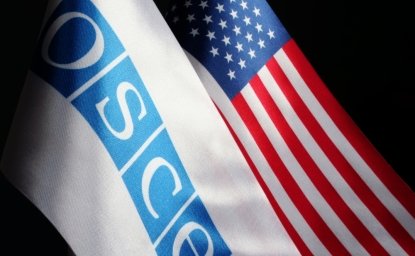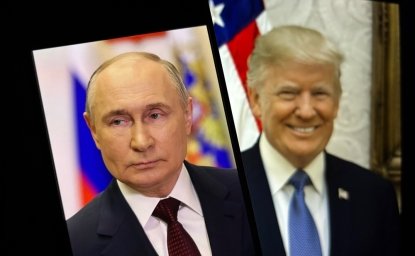National Identity through the Prism of Immigration: The Case Study of Modern Russia

Since the collapse of the Soviet Union, the collective identity of the population of the Russian Federation has been defined and redefined to address various social, political and economic forces in the region. The tremendous shift in territorial boundaries and populations throughout the former Soviet space catalyzed the need to understand Russia's self-perception after 1991. At a 4 October 2010 talk, Ekaterina Romanova, Assistant Professor, School of International Service, American University, discussed her research on Russia's national identity through the lens of modern immigration. By analyzing the country's self-perception using this approach, Romanova argued that "immigration serves as a litmus test for determining national identity in Russia."
Migration trends to and from the Russian Federation have caused significant controversy in the country's construction of its national identity. Russia has the second-fastest growing immigration population, ranking only second to the United States. In light of the 20 percent increase in cases of nationalist violence in Russia in recent years, Romanova emphasized that the issues of immigration and national identity in the country are inextricably linked. The subsequent creation of states following the dissolution of the USSR challenged populations to reevaluate the concept of self perception that was only previously understood as Soviet collective identity.
The speaker elucidated that Russia has experienced two major waves of immigration in the last twenty years. The first influx of immigrants, which arrived to Russia in the 1990's, primarily consisted of ethnic Russians who sought repatriation after being temporarily displaced following the redrawing of boundaries of the former Soviet space. The second wave of immigrants arrived after the 1998 financial default, which caused crippling economic damage to the newly independent Soviet countries. These satellite states provided Russia with a wealth of ethnically diverse labor migrants, whose presence in the Russian population at that time curbed the population decline as well as supplemented the "brain drain" of the ethnic Russian populace.
Despite the seemingly positive aspects of both of these immigration waves, Romanova explained that the perception Russian citizens have of immigrants is overwhelmingly negative. In the mid-1990's, for example, 75 percent of the Russian population thought negatively about immigration. Romanova explained these opinions were largely based on false figures circulated among the native population in the immigration discourse, which also emphasizes all negative aspects of new arrivals. For the population of the Russian Federation, minority immigrants are regarded as "unwelcome and abusive guests."
The domestic socioeconomic and political problems challenging the Russian Federation in its youth overwhelmed its population's search for a new national identity, which Romanova called an "agonizing process." Although determining the state's identity took precedence in the Russian mind, this negative perception of minority immigrants shed light on ethnic Russians' understanding of state identity as ethnic identity. The separation of the population into the majority and minority groups encouraged the ethnic perception of national identity, and the concept of "statist nationalism" found in the country's territorial boundaries grew more ethnicized. Indeed, statist nationalism allowed Russians to bolster the legitimacy of state and ethnic identity as it supported the idea of who was and was not a part of the Russian Federation.
However, Romanova concluded that while understanding Russian national identity through the prism of contemporary immigration trends in that country is critical, potential issues related to this perspective may manifest themselves in the future. Various trends in Russian society today reflect the imminence of reevaluating Russian national identity. For example, the demographic crisis is bound to play a principal role in the reformation of Russia's self perception; as the country's native population of ethnic Russians begins to decline simultaneously with the influx of immigrants, the host population will need to reconsider the level of authority it possesses over minority groups. Essentially, argued Romanova, the shift in demographics will make toleration of immigrants a necessity, not a choice, as Russia's population will need to be supplemented.
Additionally, Russia's regard for immigration needs to correspond with its geopolitical strategy. As 90 percent of immigrants to Russia are originally from the former Soviet space – and that Russia's population requires immigrants to sustain itself – the need to maintain diplomatic relations with the Soviet successor states is critical to the nation's success. Romanova emphasized that the Russian Federation will have to redefine its approach to international relationships in order to be able to compete for immigrants. As migrant workers have a choice in their destination, rising competition for qualified laborers poses a previously nonexistent threat to the sustainability of the Russian population, which the government will have to address.
Romanova concluded her presentation by expounding on the dichotomy between the Russian population's perspective on immigration versus the government's legislative responses. As immigration to the Russian Federation is both inevitable and vital to the country's survival, the current administration will need to manipulate the current legislative climate to promote immigration as a national resource. In addition, the government will have to counter an inevitable "mainstream backlash" against positive perspectives to immigration that could potentially impact national identity and the rise of nationalism.
Blair Ruble, Director, Kennan Institute
Author

Kennan Institute
The Kennan Institute is the premier US center for advanced research on Eurasia and the oldest and largest regional program at the Woodrow Wilson International Center for Scholars. The Kennan Institute is committed to improving American understanding of Russia, Ukraine, Central Asia, the South Caucasus, and the surrounding region through research and exchange. Read more

Explore More
Browse Insights & Analysis
The OSCE is a Good Value for America

Infographic | Russia's Illegal Annexation of Crimea

Russia’s Indigenous Communities and the War in Ukraine
